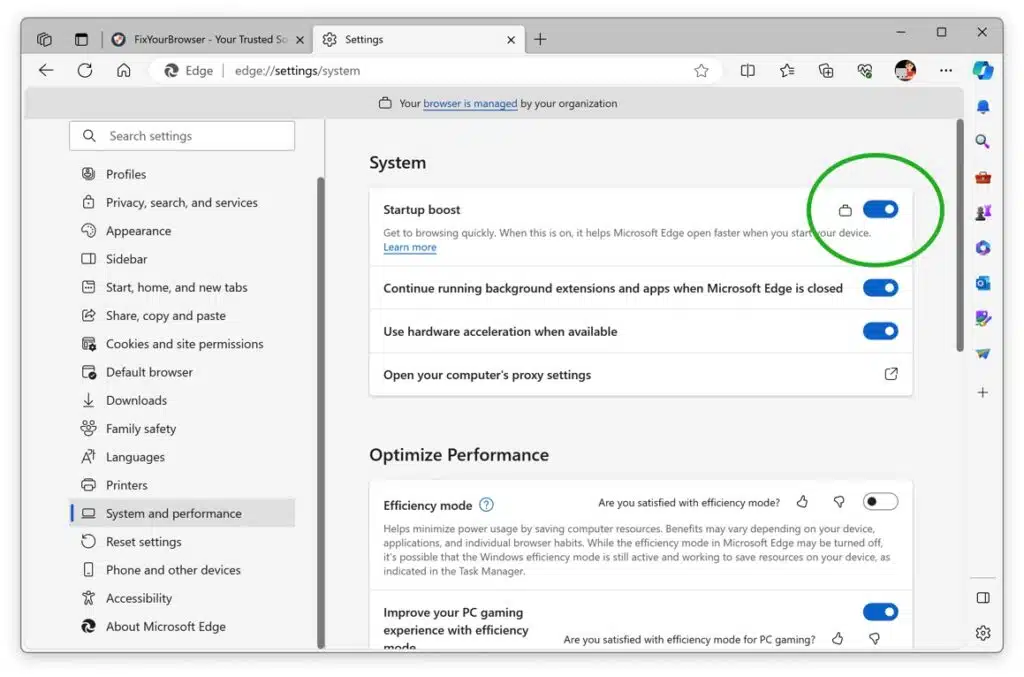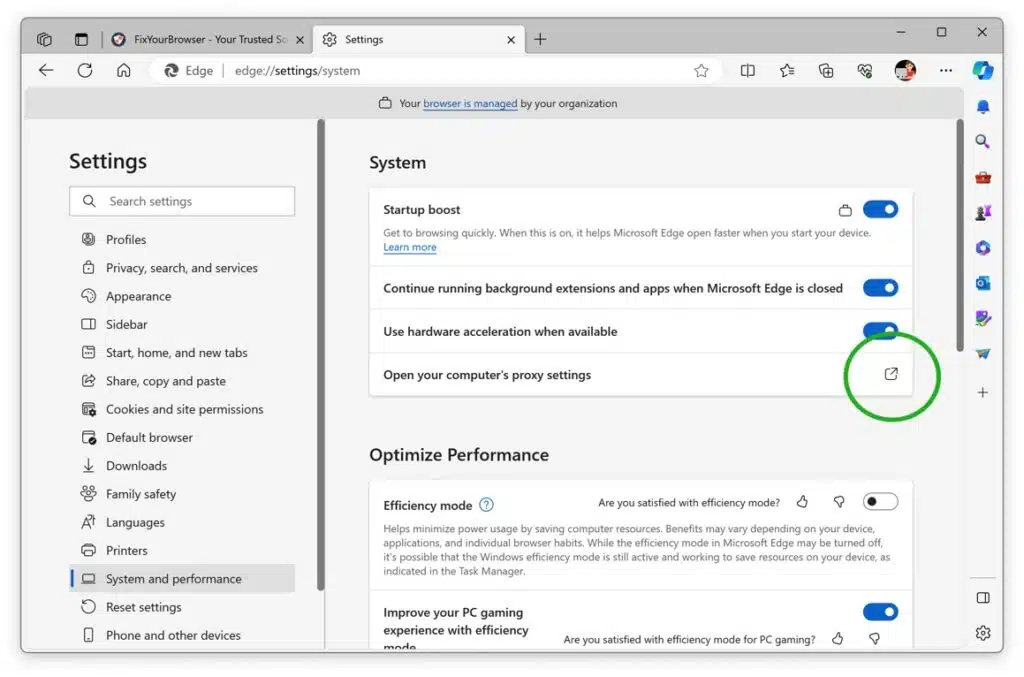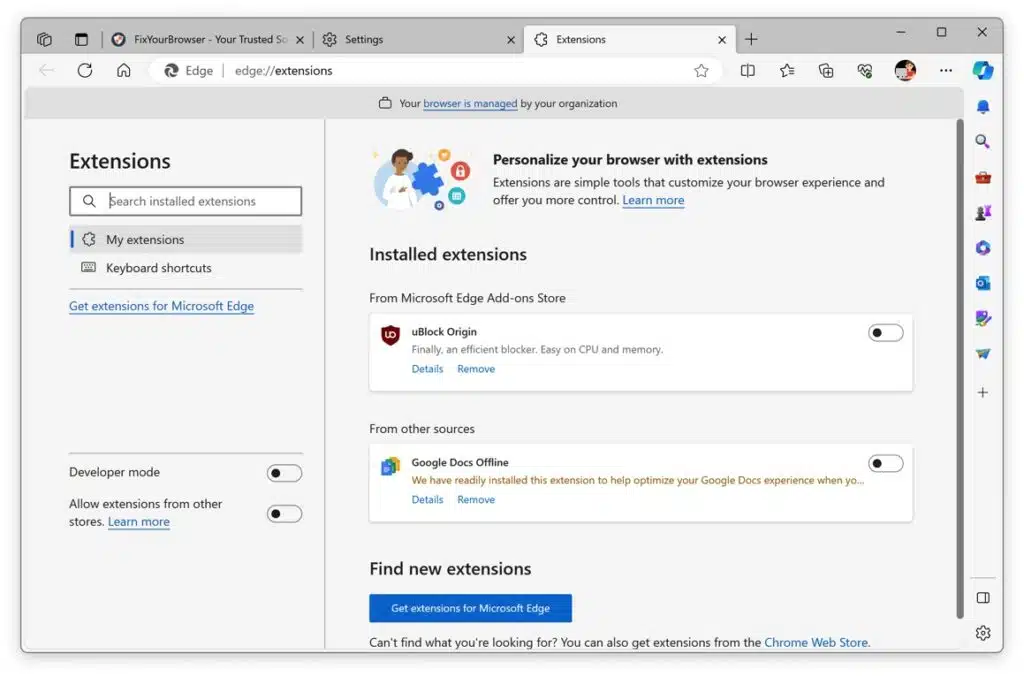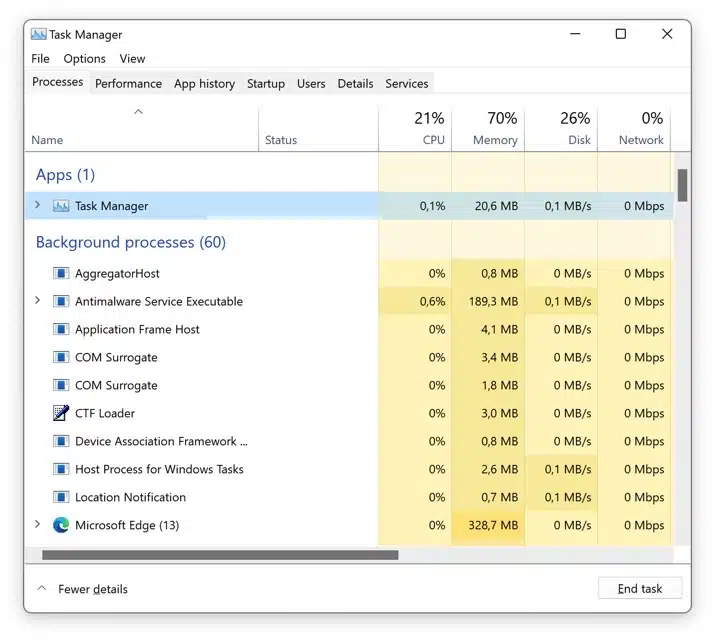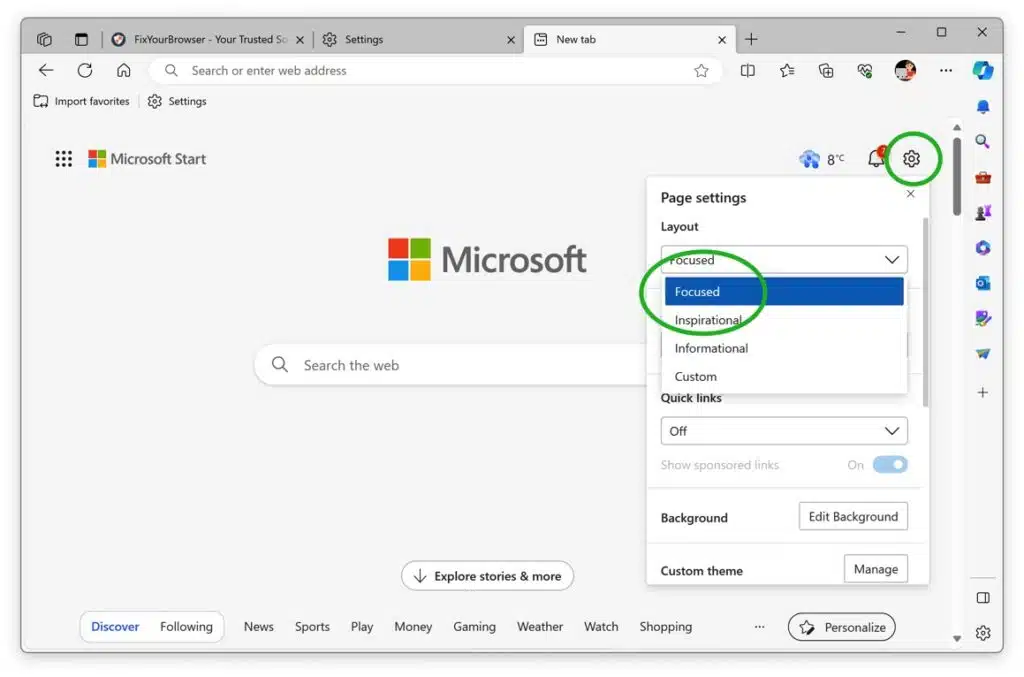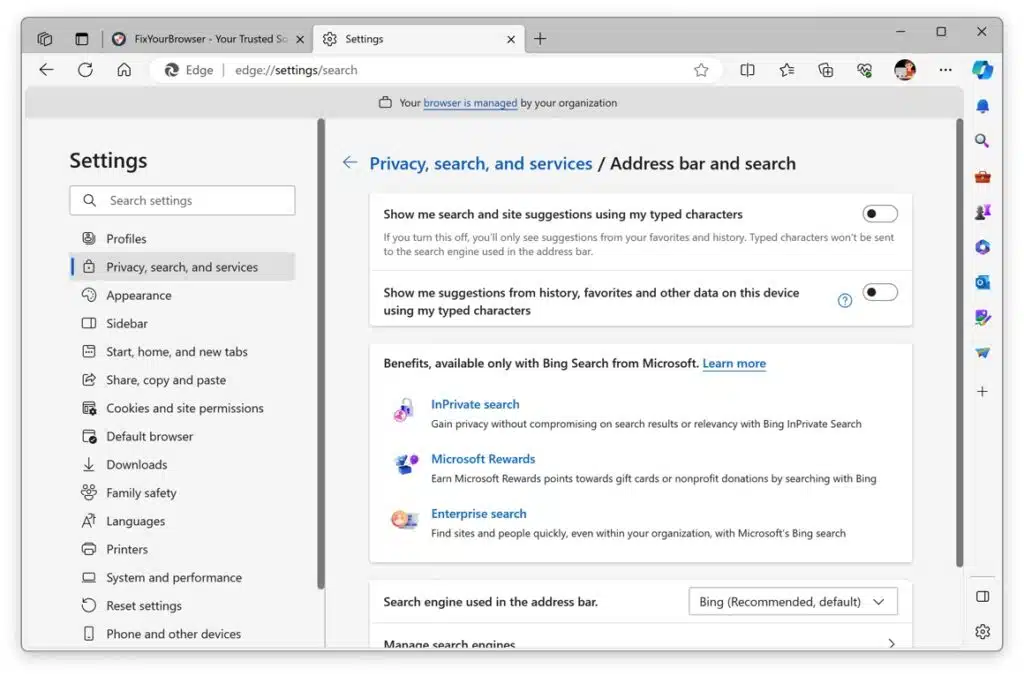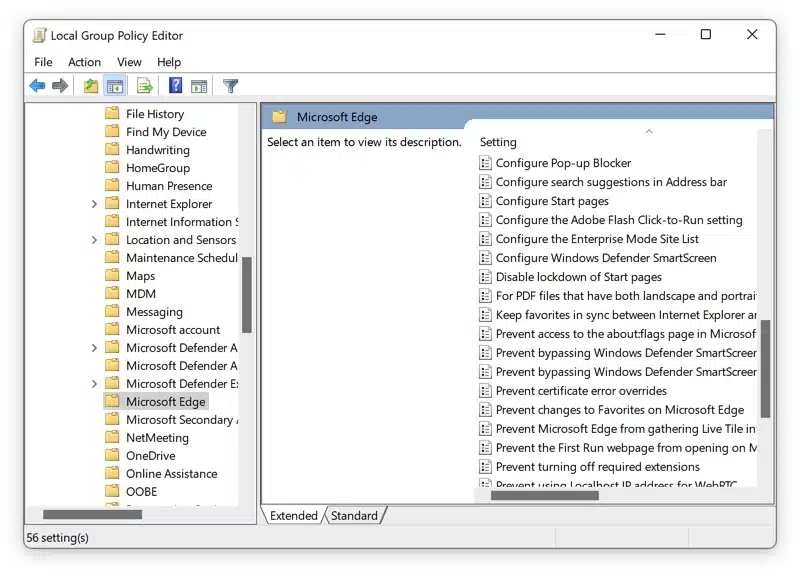Should you find yourself dissatisfied with the loading speed of Microsoft Edge, this article provides practical strategies to enhance your browsing speed significantly. These recommendations, if implemented, are designed to transform your experience with Microsoft Edge, making it remarkably faster.
To initiate, consider activating the Startup Boost function. This feature ensures that Microsoft Edge launches promptly upon each opening. Activating this function eliminates the delay typically experienced during the browser’s startup, resulting in immediate readiness for use.
Furthermore, it is advisable to examine and configure your proxy settings appropriately. Proper configuration of these settings is crucial for augmenting the speed of Microsoft Edge. By optimizing the browser’s interaction with the internet, a noticeable acceleration in webpage loading times is achieved.
Attention must also be paid to the management of browser extensions. While extensions can offer utility, an excess of unnecessary extensions can impede the performance of Edge. A prudent approach would be to disable or eliminate any non-essential extensions, which can significantly expedite the functionality of your browser.
Another factor to consider is the impact of background tasks. Often operating unnoticed, these processes can consume substantial system resources, slowing your browser. It is recommended to halt any non-essential tasks running in the background to enhance the speed of Edge.
For further optimization of Edge’s performance, suspender extensions are suggested. These extensions are instrumental in managing system resources more efficiently by suspending inactive tabs, thereby ensuring consistent, smooth operation of your browser.
Optimizing the new tab page can also contribute to a faster browsing experience. Customizing this page to suit your preferences, minimizing unnecessary widgets, and maintaining a simplistic layout can lead to quicker loading times.
For immediate loading, consider blocking the URL ntp.msn.com. This action can result in an instantaneous display of web pages, reducing wait times significantly.
Lastly, for IT professionals or individuals with access to Group Policy, setting a default home page or new tab page URL in Edge can be beneficial. This setting ensures that Edge opens directly to a specified page each time, thus saving valuable time.
In summary, the strategies above are designed to significantly accelerate Microsoft Edge’s speed, enhancing your overall browsing experience. Implementing these tips will reduce loading times and streamline your interaction with the browser. We encourage you to apply these suggestions for more efficient and enjoyable browsing.
How to make Microsoft Edge faster (Complete guide)
Are you tired of waiting for Microsoft Edge to load whenever you open it? Well, there’s a simple solution to speed up the startup process and get you browsing faster. By enabling Startup Boost, you can make Microsoft Edge load in the blink of an eye.
What is Startup Boost?
Startup Boost is a feature in Microsoft Edge that allows the browser to launch faster by running specific processes in the background. Microsoft Edge can start up more quickly when enabled because it preloads essential components and resources while your computer is still booting up.
How to Enable Startup Boost
Enabling Startup Boost in Microsoft Edge is easy. Just follow these simple steps:
- Open Microsoft Edge on your computer.
- Click on the three-dot menu icon in the top-right corner of the browser.
- Select “Settings” from the drop-down menu.
- Scroll down and click “System and performance” in the left sidebar.
- Toggle the switch next to “Startup Boost” to turn it on.
That’s it! Once you’ve enabled Startup Boost, you’ll notice a significant improvement in the startup time of Microsoft Edge. You can launch the browser and get to your favorite websites immediately.
But wait, there’s more! You can try other tips and tricks to optimize the performance of Microsoft Edge further and make it even faster. Let’s explore some of them.
Check and Configure Proxy Settings
Proxy settings can sometimes affect the speed of Microsoft Edge. If you’re experiencing slow loading times, checking your proxy settings and ensuring they are correctly configured is worth checking. You can do this by following these steps:
- Open Microsoft Edge and click on the three-dot menu icon.
- Select “Settings” and scroll down to click on “System and Performance.”
- Click “Open your computer’s proxy settings” under the “System” section.
- Ensure the “Automatically detect settings” option is turned on in the Proxy settings window.
- If you use a specific proxy server, ensure the correct address and port are entered.
By correctly configuring your proxy settings, you can eliminate any potential bottlenecks and improve the speed of Microsoft Edge.
Disable or Delete Unnecessary Extensions
Extensions can significantly enhance your browsing experience but also slow down Microsoft Edge. If you have many extensions installed, reviewing and disabling or deleting the ones you don’t need is a good idea. Here’s how:
- Open Microsoft Edge and click on the three-dot menu icon.
- Select “Extensions” from the drop-down menu.
- Click on “Manage extensions.”
- Review the list of installed extensions and disable or delete any that you no longer use or need.
By reducing the number of extensions running in the background, you can free up system resources and improve the overall performance of Microsoft Edge.
Stop Unwanted Background Tasks
Sometimes, unwanted tasks running in the background may impact the speed of Microsoft Edge. These tasks could be related to other applications or processes running on your computer. To stop unwanted background tasks, follow these steps:
- Press Ctrl+Shift+Esc to open the Task Manager.
- In the Task Manager window, go to the “Processes” tab.
- Look for processes that use a significant amount of CPU or memory.
- Right-click on the process and select “End Task” to stop it.
You can allocate more system resources to Microsoft Edge and improve its performance by stopping unwanted background tasks.
Utilize Suspender Extensions
If you’re a power user with multiple tabs open in Microsoft Edge, you may experience slowdowns due to high memory usage. In this case, using suspender extensions can help optimize the performance of Microsoft Edge. These extensions automatically suspend inactive tabs, freeing up memory and reducing the strain on your system. You can find suspender extensions in the Microsoft Edge Add-ons Store.
Optimize the New Tab Page Experience
The new tab page in Microsoft Edge can also impact the loading speed of the browser. By optimizing the new tab page, you can make it load faster and get to your desired websites more quickly. Here’s how:
- Open Microsoft Edge and click on the gear icon in the top-right corner.
- Select “Customize” from the drop-down menu.
- In the “Page layout” section, choose the “Focused” or “Inspirational” layout.
- Disable any unnecessary widgets or features on the new tab page.
By streamlining the new tab page, you can reduce the amount of content that needs to load and improve the overall speed of Microsoft Edge.
Block the URL ntp.msn.com
Another way to make Microsoft Edge load instantly is to block the URL ntp.msn.com. This URL displays the news feed on the new tab page. By blocking it, you can prevent the news feed from loading, resulting in faster browser startup. To block the URL ntp.msn.com, follow these steps:
- Open Microsoft Edge and click on the three-dot menu in the top-right corner.
- Select “Settings” from the drop-down menu.
- Scroll down and click on “Privacy, search, and services” in the left sidebar.
- Under the “Services” section, click on the “Address bar and search” and select “Show me search and site suggestions using my typed characters.”
- Toggle the switch next to “Show me suggestions from history, favorites, and other data on this device using my typed characters” to the off position.
By blocking the URL ntp.msn.com, you can significantly reduce the startup time of Microsoft Edge and enjoy a faster browsing experience.
Group Policy for Default Home Page or New Tab Page URL
If you’re using Microsoft Edge in a corporate environment, you can use Group Policy to set the default home page or new tab page URL. This allows you to control the browsing experience and optimize the loading time of Microsoft Edge for all users. To set the default home page or new tab page URL using Group Policy, follow these steps:
- Press the Windows key + R to open the Run dialog box.
- Type “gpedit.msc” and press Enter to open the Group Policy Editor.
- Navigate to “Computer Configuration” > “Administrative Templates” > “Windows components” > “Microsoft Edge.”
- Double-click on either “Configure the home page URL” or “Configure the new tab page URL” depending on your preference.
- Select the “Enabled” option and enter the desired URL.
By using Group Policy to set the default home page or new tab page URL, you can ensure a consistent browsing experience and improve the speed of Microsoft Edge.
In conclusion, by following these tips and optimizing your Microsoft Edge browser, you can make it faster and enjoy a smoother browsing experience. Remember to enable Startup Boost, check and configure proxy settings, disable or delete unnecessary extensions, stop unwanted background tasks, use suspender extensions, optimize the new tab page experience, block the URL ntp.msn.com, and utilize Group Policy if applicable. With these optimizations, you can browse the web quickly and efficiently. Thank you for reading!
Also read:
